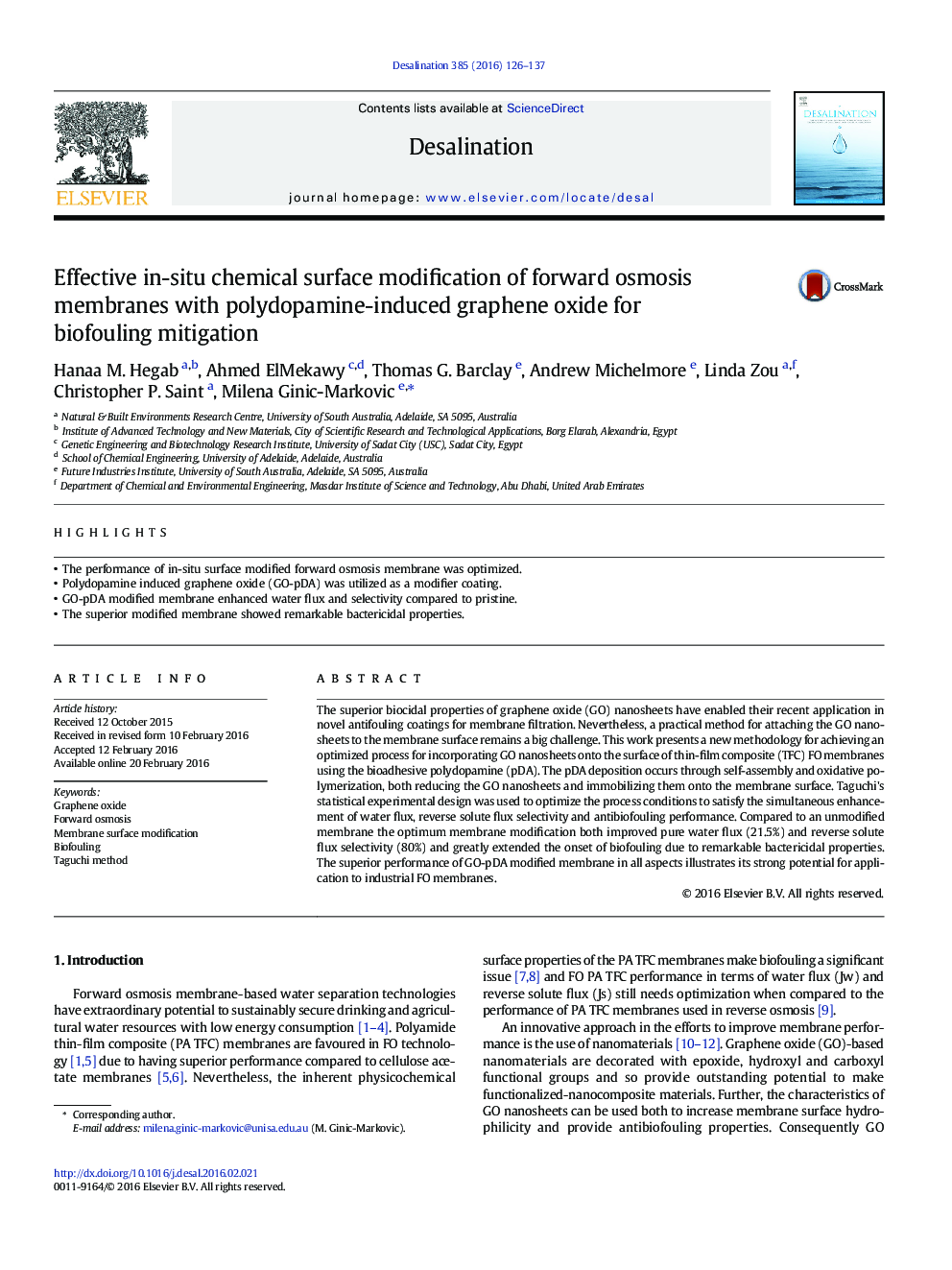| Article ID | Journal | Published Year | Pages | File Type |
|---|---|---|---|---|
| 622903 | Desalination | 2016 | 12 Pages |
•The performance of in-situ surface modified forward osmosis membrane was optimized.•Polydopamine induced graphene oxide (GO-pDA) was utilized as a modifier coating.•GO-pDA modified membrane enhanced water flux and selectivity compared to pristine.•The superior modified membrane showed remarkable bactericidal properties.
The superior biocidal properties of graphene oxide (GO) nanosheets have enabled their recent application in novel antifouling coatings for membrane filtration. Nevertheless, a practical method for attaching the GO nanosheets to the membrane surface remains a big challenge. This work presents a new methodology for achieving an optimized process for incorporating GO nanosheets onto the surface of thin-film composite (TFC) FO membranes using the bioadhesive polydopamine (pDA). The pDA deposition occurs through self-assembly and oxidative polymerization, both reducing the GO nanosheets and immobilizing them onto the membrane surface. Taguchi's statistical experimental design was used to optimize the process conditions to satisfy the simultaneous enhancement of water flux, reverse solute flux selectivity and antibiofouling performance. Compared to an unmodified membrane the optimum membrane modification both improved pure water flux (21.5%) and reverse solute flux selectivity (80%) and greatly extended the onset of biofouling due to remarkable bactericidal properties. The superior performance of GO-pDA modified membrane in all aspects illustrates its strong potential for application to industrial FO membranes.
